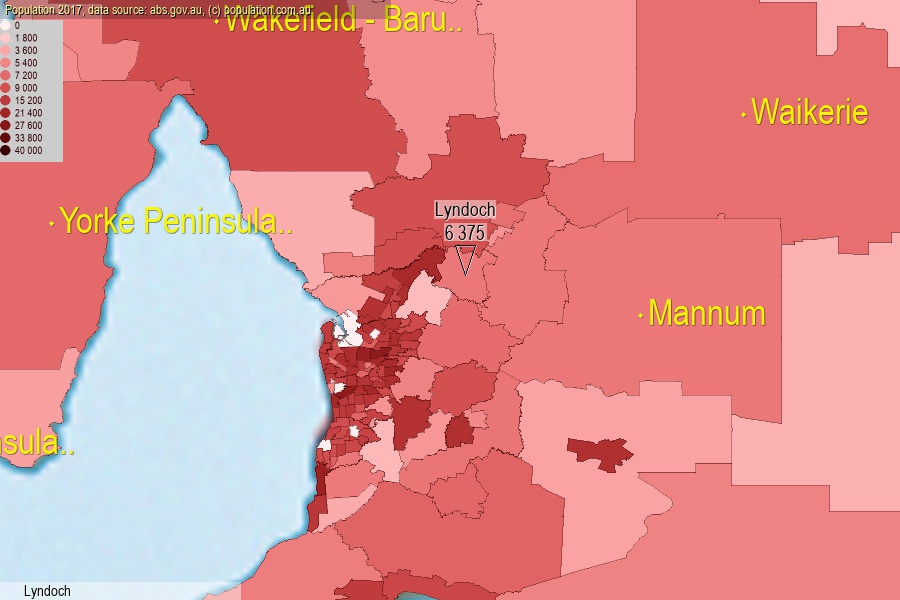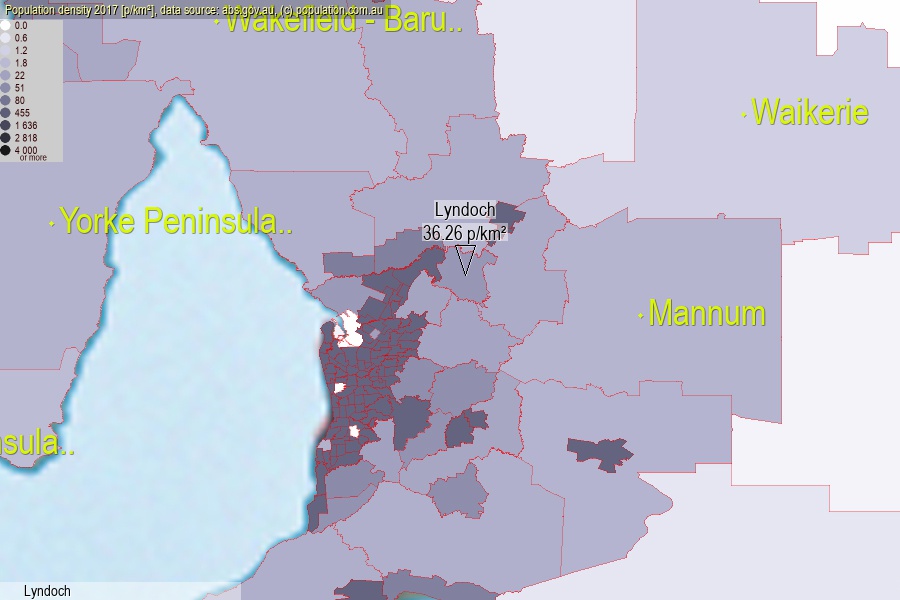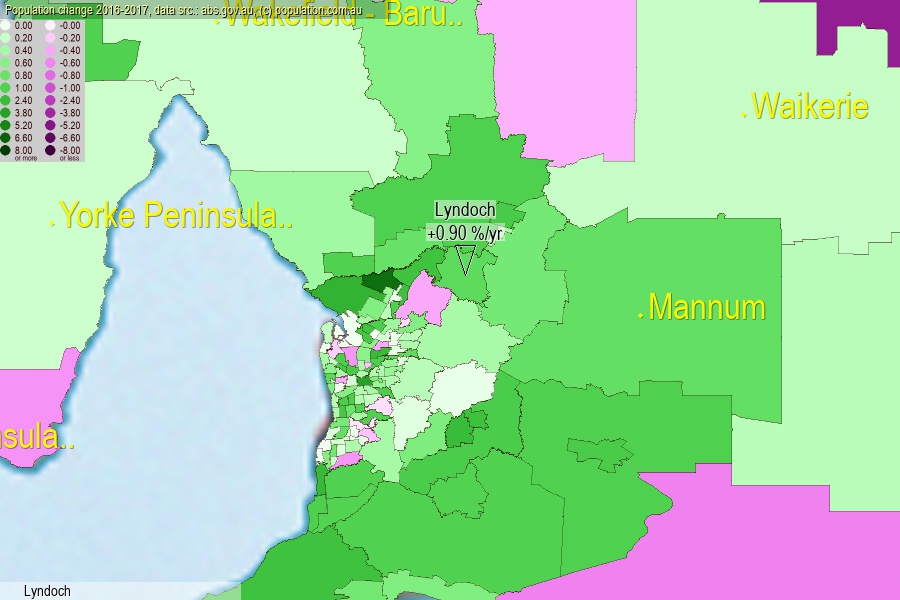 population.com.au
population.com.auLast official estimated population of Lyndoch (as Statistical Area Level 2) was 6 375 people (on 2017-06-30)[2]. This was 0.03% of total Australian population and 0.368% of SA population. Area of Lyndoch is 175.80 km², in this year population density was 36.26 p/km² . If population growth rate would be same as in period 2016-2017 (+0.9%/yr), Lyndoch population in 2025 would be 6 850. [0]



Click to enlarge. Lyndoch is located in the center of the images.
Population [people], population density [p./km²] and population change [%/year] [2]
View borders » (new window) [4]
[1991-1992] +1.61 %/Yr.
[1992-1993] +2.94 %/Yr.
[1993-1994] +3.92 %/Yr.
[1994-1995] +4.57 %/Yr.
[1995-1996] +1.69 %/Yr.
[1996-1997] +1.17 %/Yr.
[1997-1998] +1.20 %/Yr.
[1998-1999] +1.01 %/Yr.
[1999-2000] +1.09 %/Yr.
[2000-2001] +1.46 %/Yr.
[2001-2002] +2.88 %/Yr.
[2002-2003] +2.49 %/Yr.
[2003-2004] +3.52 %/Yr.
[2004-2005] +2.50 %/Yr.
[2005-2006] +2.23 %/Yr.
[2006-2007] +2.37 %/Yr.
[2007-2008] +1.00 %/Yr.
[2008-2009] +1.52 %/Yr.
[2009-2010] +0.58 %/Yr.
[2010-2011] +0.88 %/Yr.
[2011-2012] +2.05 %/Yr.
[2012-2013] +1.72 %/Yr.
[2013-2014] +1.79 %/Yr.
[2014-2015] +1.94 %/Yr.
[2015-2016] +2.02 %/Yr.
[2016-2017] +0.90 %/Yr.
[0] Calculated with linear interpolation from officially estimated population
[1] Read more about SA2 and Australian Statistical Geography Standard (ASGS) on abs.gov.au
[2] Population data from Australian Bureau of Statistics (Population and density: 2017; change: 2016-2017)
[3] Digital Boundaries: Australian Statistical Geography Standard (ASGS) 2016.
[4] Border coordinates are simplifyed using Ramer-Douglas-Peucker algorithm.